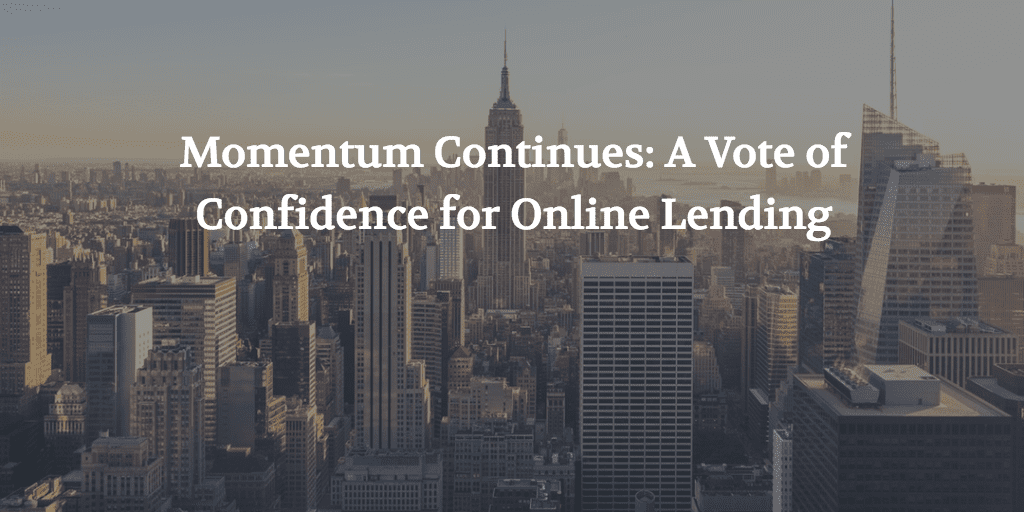
[Editor’s note: This is a guest post from Matt Burton, CEO and Co-Founder of Orchard.]
The past nine months have seen a serious uptick in volatility in our nascent online lending industry.
News of potential conflicts of interest at Lending Club, investor pullback, and staffing reductions at Avant and Prosper are giving some people pause. But is this pessimism really called for? Is fintech really riding for a fall, or have the media and the market been caught up in a news cycle that doesn’t actually match the reality on the ground? From where I sit, I’d say that the latter is very likely the case.
The truth of the matter is that most industries have to weather periods of volatility like this in order to mature. It may not be comfortable in the short term — and in hindsight, the problems may have been avoidable — but it tends to make industries stronger and more resilient in the long run.
We believe that the most significant cause for collective concern — the shakeup at Lending Club — has unduly served as a proxy for the state of the overall industry. And although many online lenders have suffered to varying degrees as a result of the fallout from those events, most are showing signs of recovering. Only one lender, Vouch Financial, has shuttered. Not what you would have expected based on the doom-and-gloom reporting around the industry.
Online lending is still unique in its ability to meet the demands of the modern consumer and investor by making credit products more accessible, transparent, and customizable. Those capabilities are baked into the DNA of the industry as a whole and can’t be easily removed.
To keep things in perspective, it’s important to remember that the transparency and flexibility that make online lending so appealing to so many individuals and institutions remain unchanged. That isn’t to say, however, that there haven’t been lessons coming out of our industry’s recent troubles.
Underwriting practices, for example, are being reconsidered. Tighter lending guidelines, while reducing some borrowers’ access to credit, will, in the end, result in stronger loan performance for investors. Appealing to investors in this way will allow online lenders to broaden the pool of capital available to their higher quality and more thoroughly-vetted borrowers. The result is a virtuous cycle that is in everyone’s best interest.
Taking a safer and more conservative approach has its limits, though. To turn the clock back too far, to tighten lending rules too much, to limit exposure inordinately in favor of safer — and smaller — returns, runs the risk of turning online lending into the digital equivalent of traditional offline lenders. This would be a shame and counterproductive since online lending largely arose as a corrective response to the excessively restrictive lending practices of banks and other more traditional lenders.
A related downside to this newly-discovered conservatism may be a reluctance on the part of investors to adopt newer and more innovative lending models. Online lending arose to serve the growing pool of borrowers whose needs simply weren’t being served by traditional lenders. Few investors are in a position to understand all of the nuances involved with every lending model or new loan type being created. The evolving online distribution model and new types of loans — from credit consolidation to merchant cash advances — require new ways to evaluate risk and distribute investment dollars. The online lending industry may face growing pains as lenders and investors work together to determine which new products and models will be successful, but it is the best solution for bringing together borrowers, lenders, and investors in a fair and efficient way.
As with any asset class, consistent positive performance likely will assuage concerns over time and allow newer online lenders and loan types to be deemed a safe and reasonable risk. Online lenders can help their case by working more closely with investors willing to participate in emerging asset classes. That requires a degree of transparency that hasn’t been part of financial services in the past. Lenders need to be willing and able to normalize and share their borrower data with investors. Those lenders who are able to do this most effectively will see greater success than those that remain tied to rigid data protocols.
When comparing online and traditional lending, there are some who wrongly assume online is somehow unregulated. In reality, lending laws and regulations apply to lending activities irrespective of whether they are conducted online or otherwise, and the funding banks that work with online platforms are subject to extensive legal and regulatory oversight. As online lending continues to thrive and comes to represent a growing share of the economy, it will rightly continue to attract attention. Rather than viewing this as an unwelcome development, it should be recognized as a sign of a maturing market.
The issues that online lending has experienced over the past several months are the growing pains of a healthy and evolving industry. The fundamentals that made online lending the standout industry that it is — transparency, liquidity, and efficient access to credit — remain unchanged. Market participants — be they borrowers, lenders, investors, regulators, or service providers — need to acknowledge the mistakes that were made and learn the lessons this rough patch has taught. I remain confident that they will do so and that they will rededicate themselves to creating the data tools, infrastructure, and primary and secondary markets essential to taking the industry to the next level, here in the U.S. and around the world.


